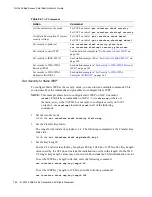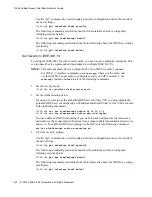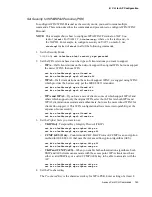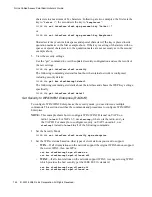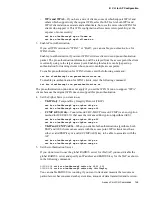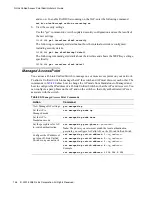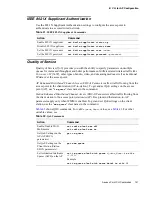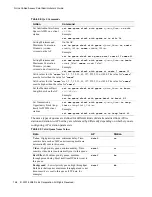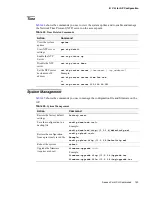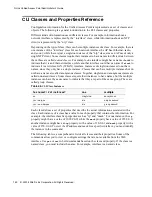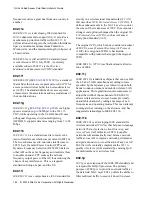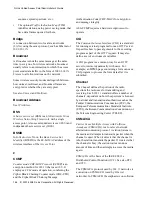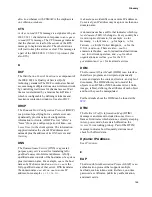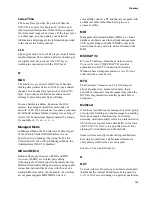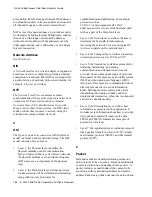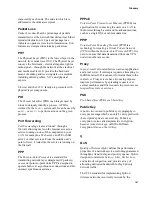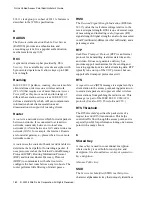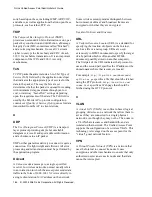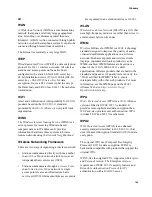
D-Link Unified Access Point Administrator’s Guide
154 © 2001-2008 D-Link Corporation. All Rights Reserved.
sequence spread spectrum, etc.).
•
The optional Traffic Indication Map (TIM)
identifies stations, using power saving mode, that
have data frames queued for them.
Bridge
A connection between two local area networks
(
LAN
s) using the same protocol, such as Ethernet or
IEEE
802.1X
.
Broadcast
A Broadcast sends the same message at the same
time to everyone. In wireless networks, broadcast
usually refers to an interaction in which the access
point sends data traffic in the form of
IEEE
802.1X
Frame
s to all client stations on the network.
Some wireless security modes distinguish between
how unicast, multicast, and broadcast frames are
encrypted or whether they are encrypted.
See also
Unicast
and
Multicast
.
Broadcast Address
See
IP Address
.
BSS
A basic service set (BSS) is an
Infrastructure Mode
Wireless Networking Framework
with a single
access point. Also see extended service set (
ESS
) and
independent basic service set (
IBSS
).
BSSID
In
Infrastructure Mode
, the Basic Service Set
Identifier (BSSID) is the 48-bit
MAC
address of the
wireless interface of the
Access Point
.
C
CCMP
Counter mode/CBC-MAC Protocol (CCMP) is an
encryption method for
802.11i
that uses
AES
. It
employs a CCM mode of operation, combining the
Cipher Block Chaining Counter mode (CBC-CTR)
and the Cipher Block Chaining Message
Authentication Code (CBC-MAC) for encryption
and message integrity.
AES-CCMP requires a hardware coprocessor to
operate.
CGI
The Common Gateway Interface (CGI) is a standard
for running external programs from an
HTTP
server.
It specifies how to pass arguments to the executing
program as part of the
HTTP
request. It may also
define a set of environment variables.
A CGI program is a common way for an
HTTP
server to interact dynamically with users. For
example, an HTML page containing a form can use a
CGI program to process the form data after it is
submitted.
Channel
The Channel defines the portion of the radio
spectrum the radio uses for transmitting and
receiving. Each
802.11
standard offers a number of
channels, dependent on how the spectrum is licensed
by national and transnational authorities such as the
Federal Communications Commission (FCC), the
European Telecommunications Standards Institute
(ETSI), the Korean Communications Commission, or
the Telecom Engineering Center (TELEC).
CSMA/CA
Carrier Sense Multiple Access with Collision
Avoidance (CSMA/CA) is a low-level network
arbitration/contention protocol. A station listens to
the media and attempts to transmit a packet when the
channel is quiet. When it detects that the channel is
idle, the station transmits the packet. If it detects that
the channel is busy, the station waits a random
amount of time and then attempts to access the media
again.
CSMA/CA is the basis of the IEEE 802.11e
Distributed Control Function (
DCF
). See also
RTS
and
CTS
.
The CSMA/CA protocol used by
802.11
networks is
a variation on CSMA/CD (used by
Ethernet
networks). In CSMA/CD the emphasis is on collision

